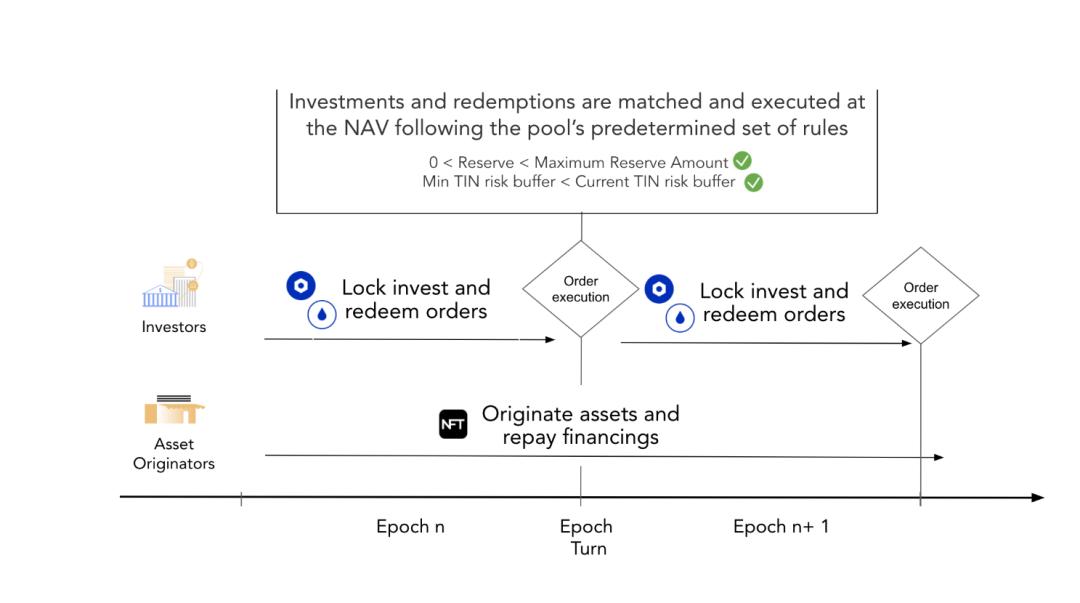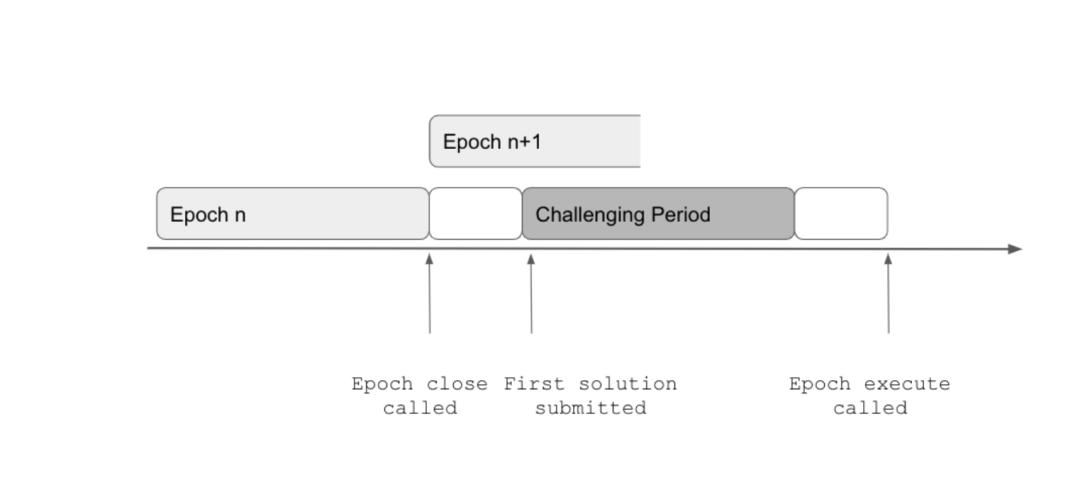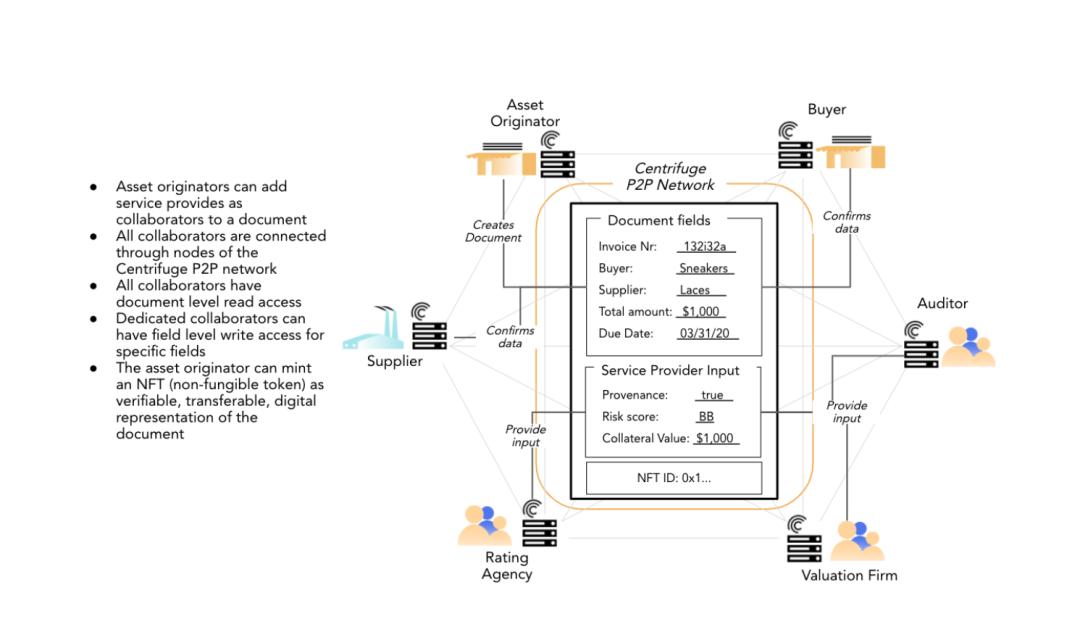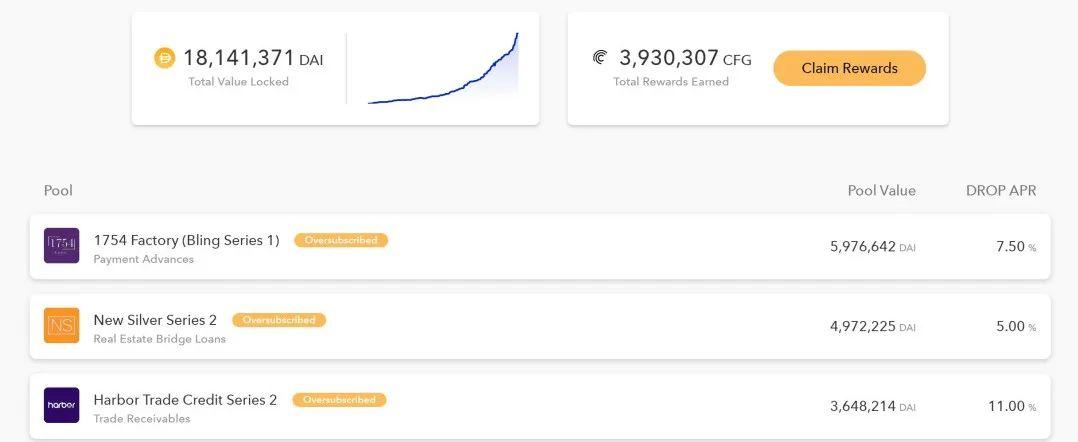An Analysis of the Mechanism of Asset-backed Lending with Centrifuge
This article is sourced from Distributed Capital.
The collateralization of physical assets in reality is currently a missing piece in the DeFi puzzle. Collateralized lending of physical assets in the form of NFTs is fundamentally different from token collateralized lending. How are physical assets priced? And how are they liquidated in emergency situations?
Centrifuge is attempting to solve these problems, bringing more liquidity from the DeFi world into the real world as it steps into the realm of physical asset collateralization.
Centrifuge is a decentralized asset financing protocol aimed at bringing real-world assets onto the blockchain. The ecosystem includes Centrifuge Chain, the Tinlake lending dApp, and a P2P messaging protocol.
Centrifuge's Vision
Centrifuge aims to bring physical assets from the real world into the DeFi space, thereby reducing financing costs for small and medium-sized enterprises and providing DeFi investors with a stable source of returns that is independent of the fluctuating value of crypto assets.
In today’s financial system, only the largest companies can directly access liquid capital markets. Most companies rely on banks for financing. The lack of a transparent market, inefficiencies, and high transaction costs prevent smaller enterprises from obtaining competitive interest rates.
DeFi is a financial system that is open to everyone in the world without any barriers and is continuously evolving. Centrifuge hopes to bring the benefits of DeFi to all borrowers who have been unable to access DeFi liquidity until now.
Regarding the first user-facing product—Tinlake, Centrifuge allows anyone to launch on-chain credit funds and create collateralized loan pools. Centrifuge also offers CFG rewards, allowing investors to earn additional returns by participating in the ecosystem.
Tinlake
Tinlake is an open asset pool based on smart contracts that brings together asset originators and investors to fully leverage the limitless potential of DeFi. Ultimately, Tinlake will become a fully decentralized financing protocol and interoperate with different blockchains to integrate various financing resources.
Through Tinlake pools, businesses or "asset originators" can obtain liquidity for real-world assets (such as invoices, real estate mortgages, and royalty streams) via DeFi. They do this by marking their financial assets as NFTs and using these NFTs as collateral in the Tinlake pools.

For each Tinlake pool, investors can invest in assets using two different tokens: TIN and DROP. TIN is referred to as the "risk token," which carries default risk but offers higher returns. DROP is known as the "stable token," which protects investors against default risk and provides stable (but usually lower) returns. This is similar to the common junior/senior investment structure in traditional finance.
Each asset originator creates a pool for their financing assets. All Tinlake pools have different risk/return profiles, allowing investors to choose models that suit their investment preferences. Tinlake pools can be set as "revolving" pools or open pools, allowing investors to join or exit at any time, and the funds provided by investors can be reallocated by the asset originators (unless the investors redeem).
Revolving Pools
Revolving pools allow individual investors to invest/redeem at any time. Taking into account certain preferences of investors (for example, the risk indicator in the Drop pool is non-loss), the decentralized solution mechanism matches both investment and redemption actions. This ensures that asset originators have a stable source of liquidity while investors can flexibly invest and redeem.

Investing in Tinlake Pools
Investors can choose to whitelist any one (or two) of the Tinlake funds. If investors wish to invest using TIN or DROP tokens, they can lock DAI in the Tinlake pool at any time during a cycle. At the end of the cycle, investments and redemptions are executed automatically, typically once every 24 hours. The decentralized, automated mechanism matches investments and redemptions, ensuring that the risk indicators of the fund pool remain unchanged: for example, funds like Drop are always protected by TIN investors who bear the first loss.
After executing the investment action, the locked DAI will be exchanged for TIN or DROP tokens allocated to the investors. Transactions are executed at the current token price, which includes accrued interest, and the entire pricing model is calculated according to the NAV model. The token prices of Drop and Tin differ, and the price of Tin also needs to consider potential losses borne in an offset manner. (For example, currently, if you open a pool, you will find that the price of Drop is 1.0358, while the price of Tin is 1.0315; both prices include accrued interest.) To redeem DAI using TIN/DROP tokens, investors can lock these tokens in Tinlake. After the order is executed, they can receive the corresponding DAI based on the current token price. The actions of investors recovering their invested TIN/DROP tokens and redeeming DAI are not affected by the investment cycle. Until the TIN and DROP tokens are securely locked in the Tinlake smart contract, investors can earn accrued interest and CFG rewards.
Financing in Tinlake Pools
Asset group originators can utilize the funds provided by investors for collateral asset financing. To do this, asset originators lock the NFTs of RWA (real-world assets) into a smart contract as collateral. The NFTs are minted based on documents shared in the Centrifuge P2P protocol (the minting of NFTs is explained in detail later). The financing costs of these non-standard assets and the mainstream/maximum financing amounts are provided by an on-chain pricing scorecard and determined by external suppliers through pricing oracles. Once the NFT is priced, the asset originator can withdraw the loan. When the asset originator repays the financing, the NFT will be unlocked and transferred back to the asset originator's wallet.
Investment and Financing Cycle (Epoch)
Given that investors can invest/redeem at any time and asset originators can initiate/repay at any time, decentralized pools require a decentralized mechanism to coordinate these actions of investment, redemption, initiation, and repayment.
For Tinlake's revolving pools, all investment inflows/outflows are locked within a specified cycle and executed automatically according to predetermined priorities and risk ratings during that cycle. After executing investment/redemption transactions, asset originators can use the liquidity reserves for financing assets in the next cycle. Asset originators can also repay at any time during the cycle, but the repaid funds are concentrated in a separate reserve pool. Funds in the reserve can only be used for financing in the next cycle, allowing investors to prioritize their redemptions.
In summary, at the asset originator level, the inflows/outflows of funds during the cycle can take the following forms:
Repayment of Financing
Initiation of Assets and Withdrawal of Loans
At the investor level, the inflows/outflows of funds during the cycle can take the following forms:
- DROP Redemption
- TIN Redemption
- DROP Investment
- TIN Investment

Duration of the Cycle
At the smart contract level, executing smart contracts on Tinlake has a minimum duration. The current cycle can only be closed after the minimum duration has passed, allowing investors to call the contract to close the current cycle. Therefore, if the minimum duration of a cycle is set to 24 hours, the cycle must last at least 24 hours, but it can last longer.
This flexible setting for cycle duration allows the pool to increase funds right when it opens, and also makes transaction costs more manageable. For example, when gas prices are high, the pool starts up more slowly. If a service is added to a mature, liquid pool, the cycle can be limited to a certain duration by closing it at predefined time intervals. Once this cycle closes, the smart contract will begin processing the current state of the pool and handle all locked orders (see more details below).
Investment/Redemption Process
Investors can provide more liquidity at any time during the cycle. The DAI supplied by investors will be locked in the Tinlake contract until the end of the cycle. As long as the current cycle is active, investors can cancel the lock. In this case, the locked DAI will be transferred back to the investor's wallet.
At the end of the investment cycle, considering the maximum reserve and minimum TIN risk buffer, all locked orders will be processed and executed at the current TIN/DROP prices. Meanwhile, after the current cycle passes, investors can view the executed instructions in the UI. If some investments/redemptions cannot be executed, they will be carried over to the next investment cycle, during which DAI remains locked. These locked orders can be canceled at any time.

The redemption process works similarly to the above. If investors holding TIN/DROP wish to redeem (part of) their TIN/DROP tokens, they can lock these tokens in Tinlake at any time during the cycle. At the end of the cycle, all locked orders will be processed and executed at the current TIN/DROP prices, considering the maximum reserve and minimum TIN risk buffer.
Before transitioning to the next cycle, investors can receive DAI from the executed orders in the UI. If some investments/redemptions cannot be executed, those orders will carry over to the next cycle, and thus those tokens will remain locked. These locked orders can be canceled at any time.
Cycle transitions refer to the point when the shortest investment cycle ends, allowing anyone to call the contract to close this cycle. Once the investment cycle is closed, no one can unlock their orders.
After this cycle closes, all locked orders will be collected and processed. If this cycle is closed without any locked investment/redemption transactions, the cycle number will be buffered. During the cycle transition, the contract first processes the current state of the pool: total debt, net asset value, reserves, senior asset debt, senior asset debt balance, senior asset value, junior asset value, TIN/DROP token prices, and TIN risk buffer.
Then, the smart contract checks whether all set orders can be executed given the available funds, without breaking the minimum TIN risk buffer or maximum reserve limits.
If this is the case, all orders will be executed immediately, and the contract will process the new state of the pool. Conversely, if not all orders can be executed, the order processing and pool state will be as follows. For example, if there are not enough available funds in the reserves (plus newly injected funds) to meet all redemption orders or execute, Tinlake will initiate an "emergency resolution mechanism."
The emergency resolution mechanism means that if the existing reserves cannot redeem orders, anyone can submit a solution and resolve the executed orders of the four types of investment/redemption transactions through a simple contract call.
The smart contract checks whether the state resulting from this submission meets all the above restrictions. If so, during a 30-minute challenge period, anyone can submit a better solution. The priority of solutions is determined by the "maximum weight function" number of executed orders weight. The weight of this function may vary across different pools, but generally, for example, Drop redemptions will have the highest weight.
If a competitive feasible solution is submitted, and this solution has a higher "maximum weight function," a new 30-minute challenge period begins. If no higher solutions are submitted, anyone can call the "cycle execution" function after the 30-minute challenge period and execute the pending transactions.

P2P Network
So how do we ensure that the assets behind these NFTs truly exist? Centrifuge's P2P network guarantees this. Centrifuge's P2P network provides a secure model for creating, exchanging, and verifying asset data among collaborators and tokenizing these assets into NFTs. Asset originators can selectively share asset details with service providers, who can evaluate the data and submit information to the NFTs being minted. Meanwhile, cryptographic signatures can be used to verify the data source.

The components of the P2P network are implemented on libp2p. The Centrifuge chain serves to:
- Maintain identity in a manner similar to the ERC725 standard (identity refers to each entity or collaborator on the P2P network having a verifiable Centrifuge ID)
- Anchor state confirmations
- Mint NFTs based on off-chain documents. These NFTs can bridge to Ethereum, locked as collateral for Tinlake, and facilitate asset financing.
So, what data is included in the documents submitted by asset originators regarding asset information? How do collaborators verify the authenticity of the documents and price the assets? Documents are a set of specific fields used to represent financial assets. As long as the document format is consistent, the network supports any type of document and shares it among selected collaborators.
The exchange of documents is encrypted, and only the parties involved in this private data exchange can access them. Collaborators can be added to or removed from the documents. Different collaborators can update the documents and publish new versions within the nodes that have access.

During the NFT minting process, asset originators need to ensure the privacy of the relevant asset information. The P2P network can also achieve this. Centrifuge's privacy-supporting NFTs are tokenized forms of assets/documents that ensure the privacy of some or all asset attributes, while a public, decentralized ledger tracks asset ownership.
Use Cases of Tinlake Pools
This is the logic of collateralized lending and repayment in Tinlake. Currently, the locked amount in Tinlake has reached 18,141,371 DAI. A total of 77 companies/asset originators have created pools for collateralized loans: some pools have closed their investment cycles, some pools have locked NFTs, while most pools are still in the lending process.
On the application homepage, there are 9 pools with the highest locked amounts created for different enterprises. For example, the pool with the highest locked amount is called 1754 Factory (Bling Phase 1), which is a financial company dealing with bonds.
1754 Factory aims to provide short-term cash advances of up to €200 to Bling customers. Bling is a mobile application for French consumers that can provide users with advances of up to €10 billion. 1754 Factory has signed an institutional purchase agreement to buy Bling bonds.

At the same time, Centrifuge has established long-term partnerships with several financial companies:
New Silver, founded in 2018, is a technology-driven non-bank lender primarily focused on providing financing for the U.S. "fix and flip" industry, concentrating on single-family residential assets.
ConsolFreight is a trade finance and factoring provider focused on helping small and medium-sized enterprises and developing countries. CFs provide working capital financing to stakeholders involved in international goods and services trade.
Harbor is a fintech company focused on supply chain finance and working capital solutions. The company accelerates supplier payments through port trade financing programs to meet the liquidity needs of buyers and suppliers.










